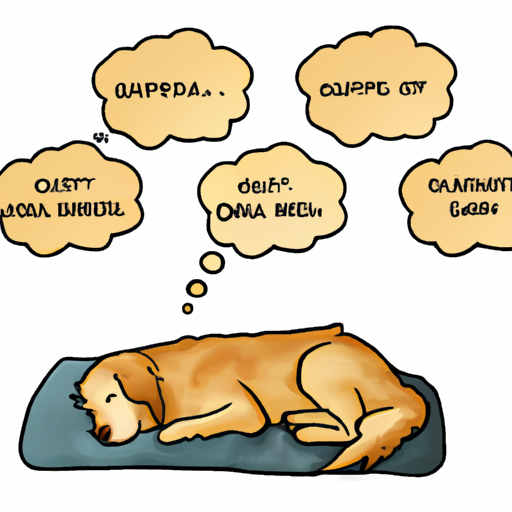The Canine Sleep Cycle
Have you ever wondered how your furry friend’s sleep patterns compare to your own? Dogs, much like their human companions, experience different stages of sleep. However, their sleep cycles are faster and more frequent. Here’s what you need to know.
- Light sleep: This is the stage during which your dog is most alert and responsive to outside stimuli. You’ll notice that their breathing is regular, but they can be easily awakened.
- Deep sleep: This is the stage that rejuvenates your pet’s mind and body. Their breathing slows down and their blood pressure drops. This is when they dream and you may notice them twitching, moving their paws, or even whimpering.
- REM sleep: Unlike humans, dogs spend only about 10% of their sleeping time in REM stage. This is when most of their dreaming occurs.
Understanding Your Dog’s Sleep Needs
Now that you understand the stages of dog’s sleep, let’s delve into how much sleep dogs actually need. This varies depending on several factors:
- Age: Puppies and older dogs require more sleep than young and adult dogs.
- Size: Larger breeds generally sleep more than smaller ones.
- Activity level: Active dogs need less sleep than those with sedentary lifestyles.
Here is a rough guide to how much sleep dogs of different ages and sizes need:
| Age/Size | Average Sleep Time |
|---|---|
| Puppies | 18-20 hours |
| Adult Dogs (Small Breeds) | 12-14 hours |
| Adult Dogs (Large Breeds) | 14-18 hours |
| Older Dogs | Up to 20 hours |
How to Create a Comfortable Sleeping Environment for Your Dog
Ensuring your dog has a comfortable and quiet place to sleep is crucial. The following suggestions can help:
- A dedicated dog bed that is the right size and offers the right support.
- A quiet space away from the hustle and bustle.
- Regular sleep/wake times to help set their internal clock.
Recognizing Sleep Disorders in Dogs
Just like humans, dogs can suffer from sleep disorders too. These may include insomnia, sleep apnea, and narcolepsy. Symptoms to watch out for include:
- Excessive daytime sleepiness.
- Difficulty falling asleep or staying asleep.
- Unusual movements or behaviors during sleep.
If you notice any of these symptoms, it’s important to consult with a vet.
How to Improve Your Dog’s Sleep
Finally, here are a few tips to help improve your dog’s sleep:
- Regular exercise: This not only tires your dog out, but it also helps regulate their sleep/wake cycle.
- Proper diet: A balanced diet is essential for maintaining overall health, including sleep health.
- Limit disturbances: Try to minimize noise and light in your dog’s sleeping area.
FAQ
Q1: Do dogs dream?
Yes, dogs do dream. They typically dream about their daily activities.
Q2: Why does my dog twitch in their sleep?
Twitching during sleep is usually a sign that your dog is dreaming.
Q3: What if my dog’s sleep pattern changes suddenly?
A sudden change in sleep patterns could indicate illness or stress. It’s best to consult with a vet.
Q4: Can dogs suffer from insomnia?
Yes, dogs can have insomnia, though it’s less common than in humans.
Q5: Should I wake my dog if they’re having a nightmare?
It’s generally best not to wake a dog from a dream. They may not recognize you right away and could react defensively.
By understanding how dogs sleep and recognizing any signs of sleep disorders, you can help ensure your furry friend gets the rest they need to stay healthy and happy.



